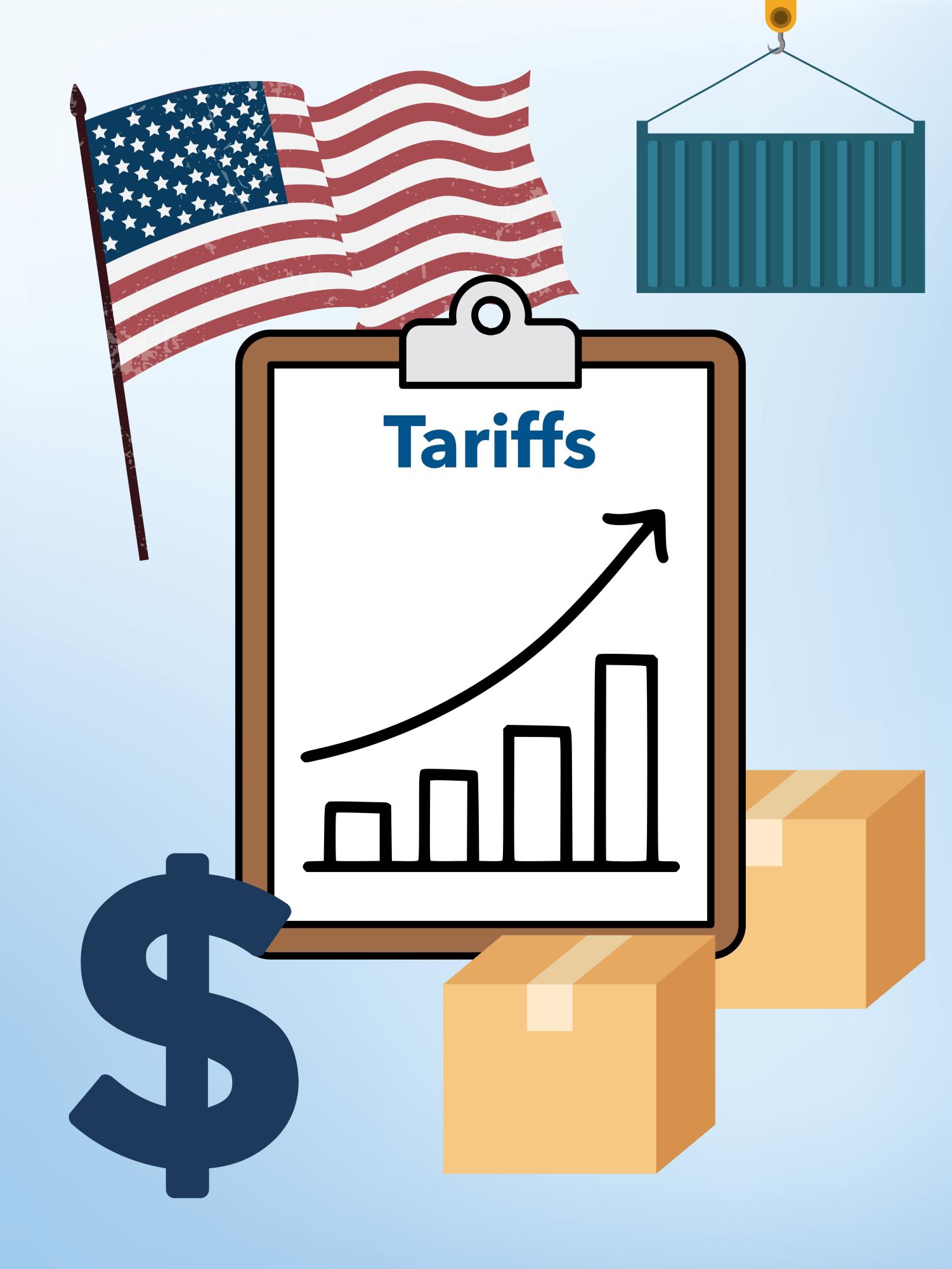- What’s going on with tariffs in the U.S. right now?
- New Tariffs Implemented: According to Axios, President Donald Trump has introduced a 10% baseline tariff on most imports, with higher rates on specific goods. As of April 21, there is a 145% tariff on goods from China.
- Targeted sectors: According to CNN Business, additional tariffs of up to 25% are planned for vehicles, semiconductors, and pharmaceuticals imports.
- Trade relations: According to Reuters, the U.S. is negotiating tariffs with over 70 countries. The country aims to isolate China economically.
- Economic impact: According to NBC Chicago, analysts warn that these tariffs could lead to higher inflation and a slowdown in economic growth.
- What is a Tariff, according to Investopedia?
- A tariff is a tax imposed by a government on imported goods.
- Tariffs can be specific (a fixed fee per unit) or ad valorem (a percentage of the item’s value).
- Governments use tariffs to raise revenue, protect domestic industries, and utilize political leverage over other countries.
- How do tariffs impact a country’s economy?
- Increased consumer prices: According to USA Facts, tariffs raise the cost of imported goods, leading to higher prices for consumers.
- Economic disruption: According to Axios, recent U.S. tariffs have led to significant reductions in trade, such as an 80% drop in U.S.-China merchandise trade, and have lowered global Gross Domestic Product (GDP) forecasts.
- Market volatility: According to Number Analytics, “Stock markets often react swiftly to tariff announcements. Tariff-induced uncertainties can lead to shifts in investor sentiment. The unpredictability of trade policies may cause investors to adopt a risk-averse stance, leading to increased market volatility.”
- Pros and Cons of Tariffs:
Pros:
- Protection of domestic industries: According to USA Facts, tariffs can shield local businesses from foreign competition.
- Revenue generation: According to Investopia, tariffs can provide a source of income for governments.
- Trade negotiation tool: According to Investopia, tariffs can be used to influence other countries’ trade policies.
Cons:
- Higher consumer costs: According to USA Facts, increased prices on imported goods can burden consumers.
- Risk of retaliation: According to AP News, other countries may impose their own tariffs in response, leading to trade wars.
- Economic inefficiencies: According to USA Facts, tariffs can disrupt supply chains and reduce overall economic efficiency.
- Current public opinion on tariffs
- A CBS News/YouGov poll found that 75% of U.S. adults believe new tariffs will raise prices.
- A Quinnipiac University poll revealed that 72% of registered voters think the tariffs will harm the U.S. economy in the short term.
- According to the same Quinnipiac University poll, support for tariffs varies by political affiliation, with 76% of Republicans in favor, while 89% of Democrats oppose them.
- What do Lincoln students think about the tariffs?
- Junior Wilson Campbell is a student in IB Business. “The tariffs are destroying investor sentiment and increasing fear, and companies are losing an enormous amount of value. Hopefully, in the long run, the future generation of investors can take advantage of cheaper shares,” said Campbell.
- Senior Addison Lyerla is an IB History student and spends much of her time cultivating and researching her interest in law and politics. “Tariffs are taxes on imported goods that raise prices for American consumers, despite being intended to protect domestic industries. Rising federal taxes and stagnant wages make essentials like food and clothing even less affordable, especially for working-class families. Even as a high school student, I’ve noticed higher prices and fewer online shopping options, with some stores no longer shipping to the U.S.—and even basic things like fruits and other healthier food options have become more expensive, making it harder to make better choices within a reasonable budget,” said Lyerla.


